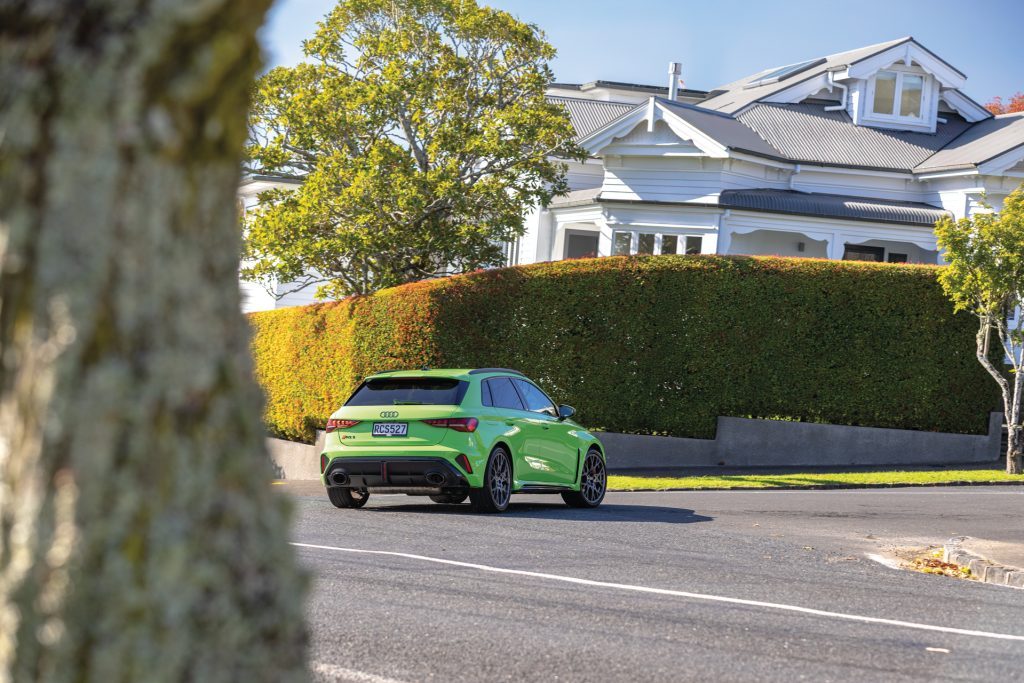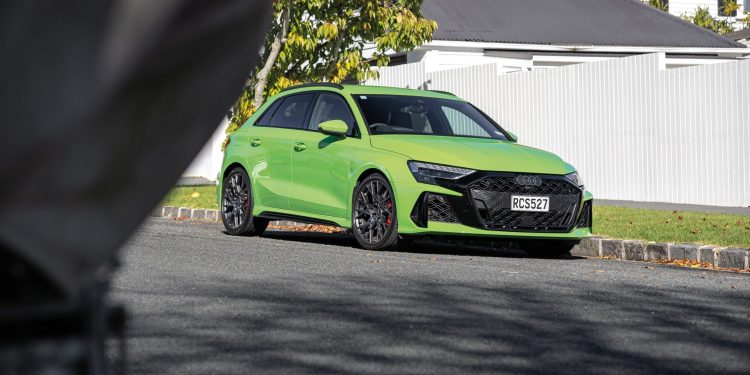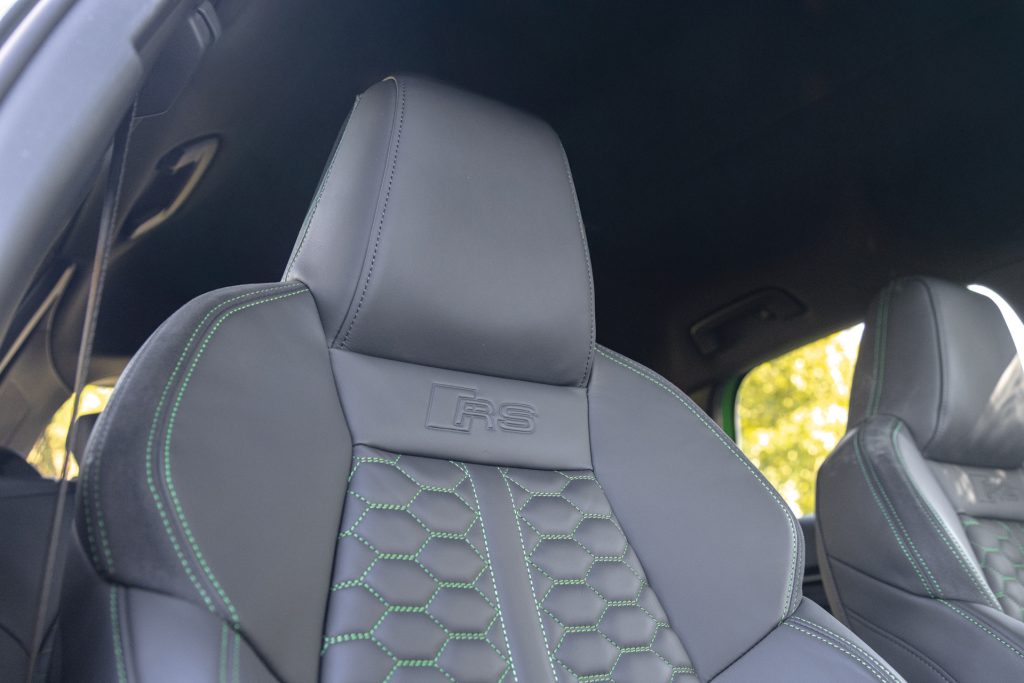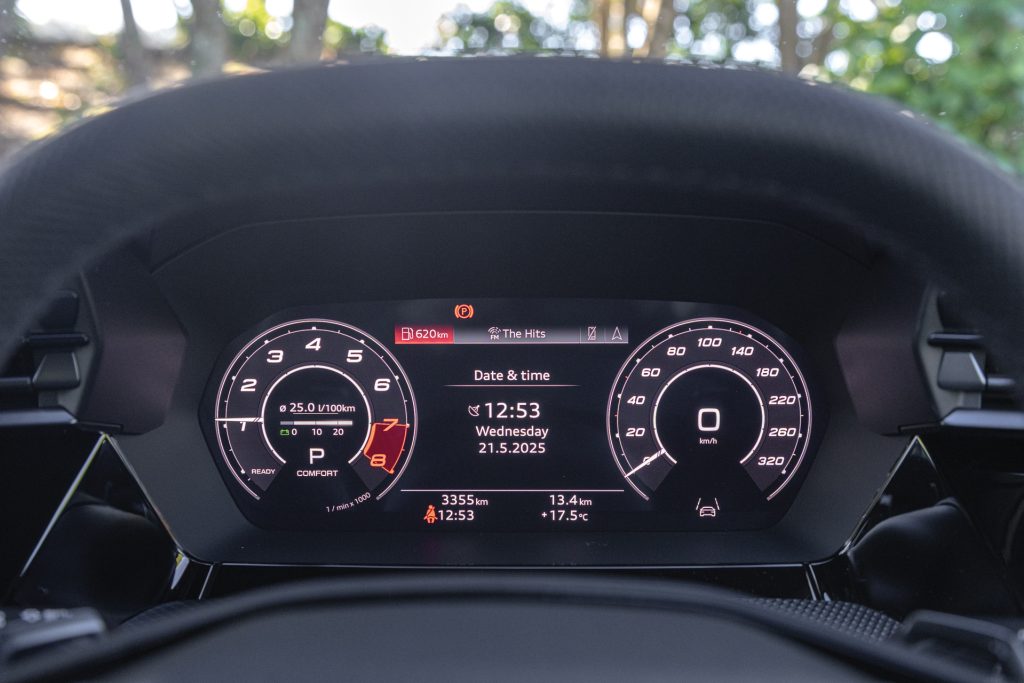2025 Audi RS 3 Sportback Review
Words: Peter Louisson | Photos: Alex Schultz
Stepping out of a hefty SUV and into something that weighs a tonne less and is not even 4.4m in length makes town travel so much simpler. And despite the amazing performance and dynamics available in Audi’s latest RS 3, there’s still enough room for five people – well, four plus a child perhaps.
Best to leave it in Comfort mode for urban work too. Any of the Sport modes and you might inadvertently be up someone’s jacksie if you give it too much jandal. This is, as Audi describes it, a “very hot hatch”. Indeed.
The price is a bit warmer than last time we drove it too, up now to $128,990. Three years ago it clocked in at $112,500. If you don’t need quite as much vim, the also quick S3 goes for $104k. But it doesn’t have the RS bragging rights, does it?
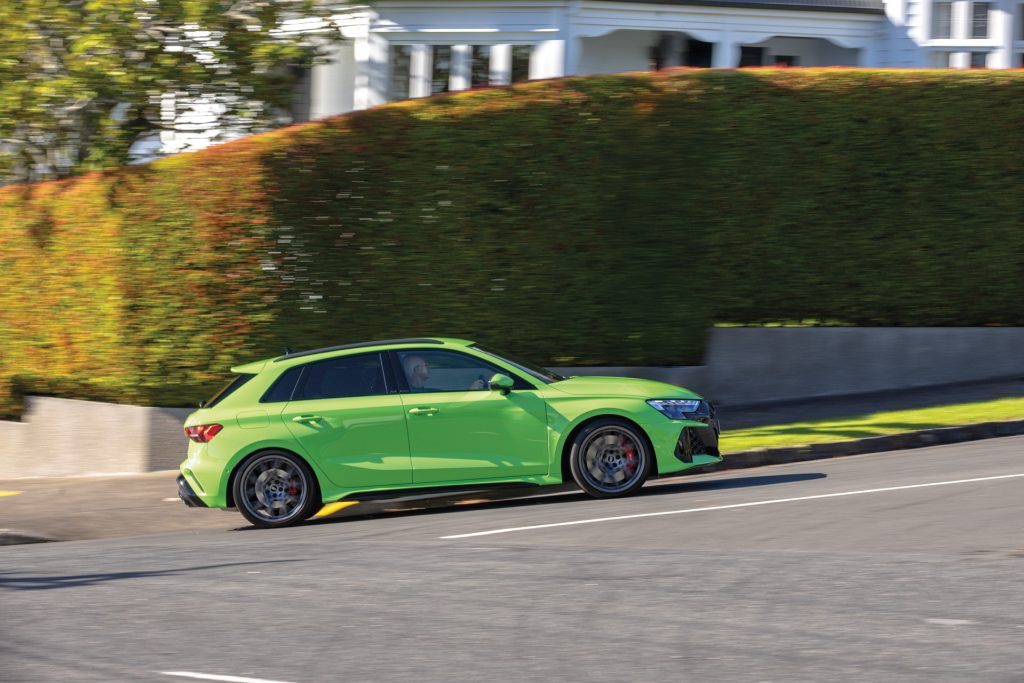
It’s with a tinge of sadness that we drive this RS 3. For it is the last of a unique breed, on its way out like the A 45. Only this Audi and the RS Q3 have a five-cylinder powerplant. The next generations will likely sport a four-pot turbo with electrification.
This 2025 model is essentially a mild facelift. The updates sees a more aggressive front end, with bigger air intakes, slimline LEDs, a refreshed interior and reworked torque vectoring by brake. Inside also gets a handy head-up display. A pity traffic sign recognition is still part of the sat nav and not anywhere on the driver’s display in something this quick.
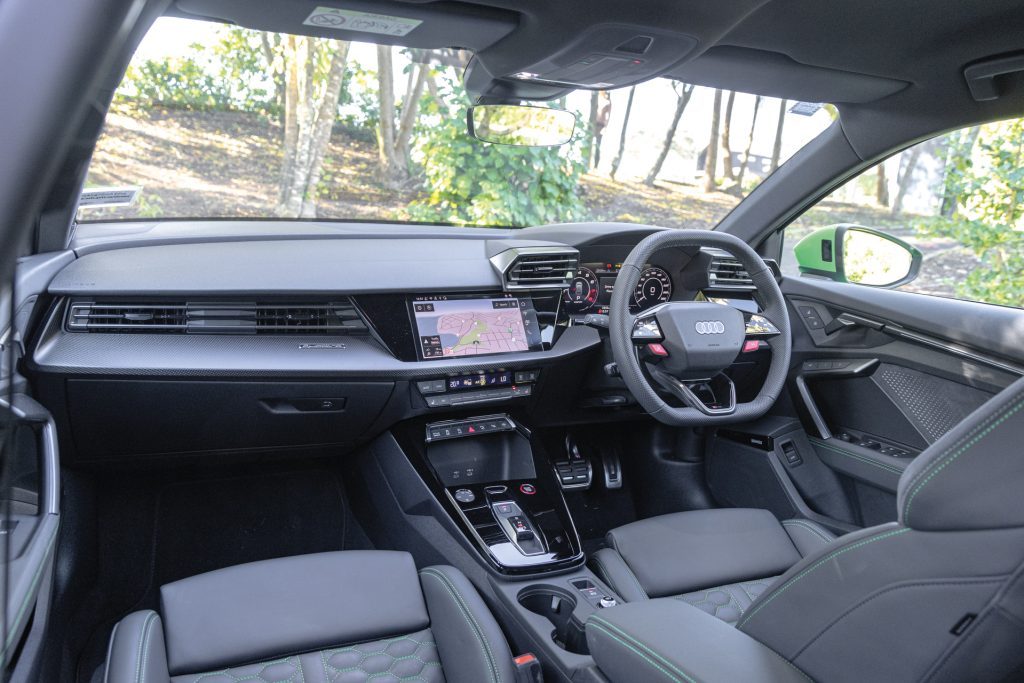
Our drive car had 10-spoke matt grey 19-inch alloys that looked the part ($2000), along with Matrix LED headlights and dynamic indicators ($2500), along with $2300 of carbon inlays inside.
At its heady $135,790 price you do get one of the most capable compact hot hatches on the market at present. Especially after mussing in the drive select area and poking a few individualisation buttons. Standard, it is simply a car that sticks like pine resin and corners in almost exactingly neutral fashion. But in an RS you want a bit of crazy too.
You get a fair old smattering of that with the five-pot turbocharged engine. No hybrid bits here. Sadly it’s the end of an era after almost 50 years in production. As before, it kicks out 294kW and 500Nm, still down on its old rival. Performance is the same as before too, give or take. It makes haste to 100 in 3.8sec and ours did precisely that according to its on-board computer and our GPS-based measuring unit.
But electric cars can do that or better for roughly half the price. We’re thinking dual-motor MG4 X-Power and BYD Seal here. And Tesla’s Model 3 Performance (373kW/741Nm) is rated at 3.1sec for $85k.
However, this old-school five-pot turbo does make a noise that no EV can replicate, apart perhaps from Hyundai’s Ioniq 5 N. It’s a friendly sound too, rather than ribald and aggressive like a C 63 wagon in our area that’s offensively loud. And on that, despite all the low profile rubber, top SPLs of 71db we found impressive.

There aren’t many EVs out there with a brake pedal that feels as right and as righteous as this. The numbers (34m) really don’t quite do it justice. And the brakes, which are big vented examples, just seem to get better as they warm to their task. They are aided in their duty by dazzling Potenza Sport tyres, (265/30ZR19s with 245/35ZR19s at the rear). The extra rubber up front helps with keeping things on line when the torque vectoring rear diff drives the car through the bends. To achieve that you must ramp up the rear sports diff to the dynamic setting. What a difference! This then power oversteers through corners, rounding up to the apex like a champ. But you also need to select S mode to get the most out of the engine. Otherwise it’s not quite in the right rev range where turbo lag is more obvious. In S, it downshifts into corners under brakes and is much more vibrant. Naturally it gulps more fuel too, but our mean in the early teens seemed decent enough given the performance potential. A steady 100km/h sees fuel use of 7.5L/100km.
Inside, it’s not like your modern minimalist EV either. The central screen isn’t a control freak, for instance. Drive modes are on a switch while lane keeping you cancel by pushing a button at the end of the indicator wand.
The driving position is just so here, the seats secure. We like the squished wheel too, flat top and bottom. With just 1.75 turns lock to lock this changes direction eagerly, the wheel with just the right amount of feedback.
Need more room and style? You’ll have to wait for the new RS 5 Avant, which should be here next year.
Audi RS 3 Sportback
$128,990 / 9.4L/100km / 214g/km
0-100 km/h 3.8s
Engine 2480cc / IL5 T/DI
Max power 294kW@5600-7000rpm
Max torque 500Nm@2250-5600rpm
Transmission 7-speed DCT, AWD
Weight (claimed) 1640kg
